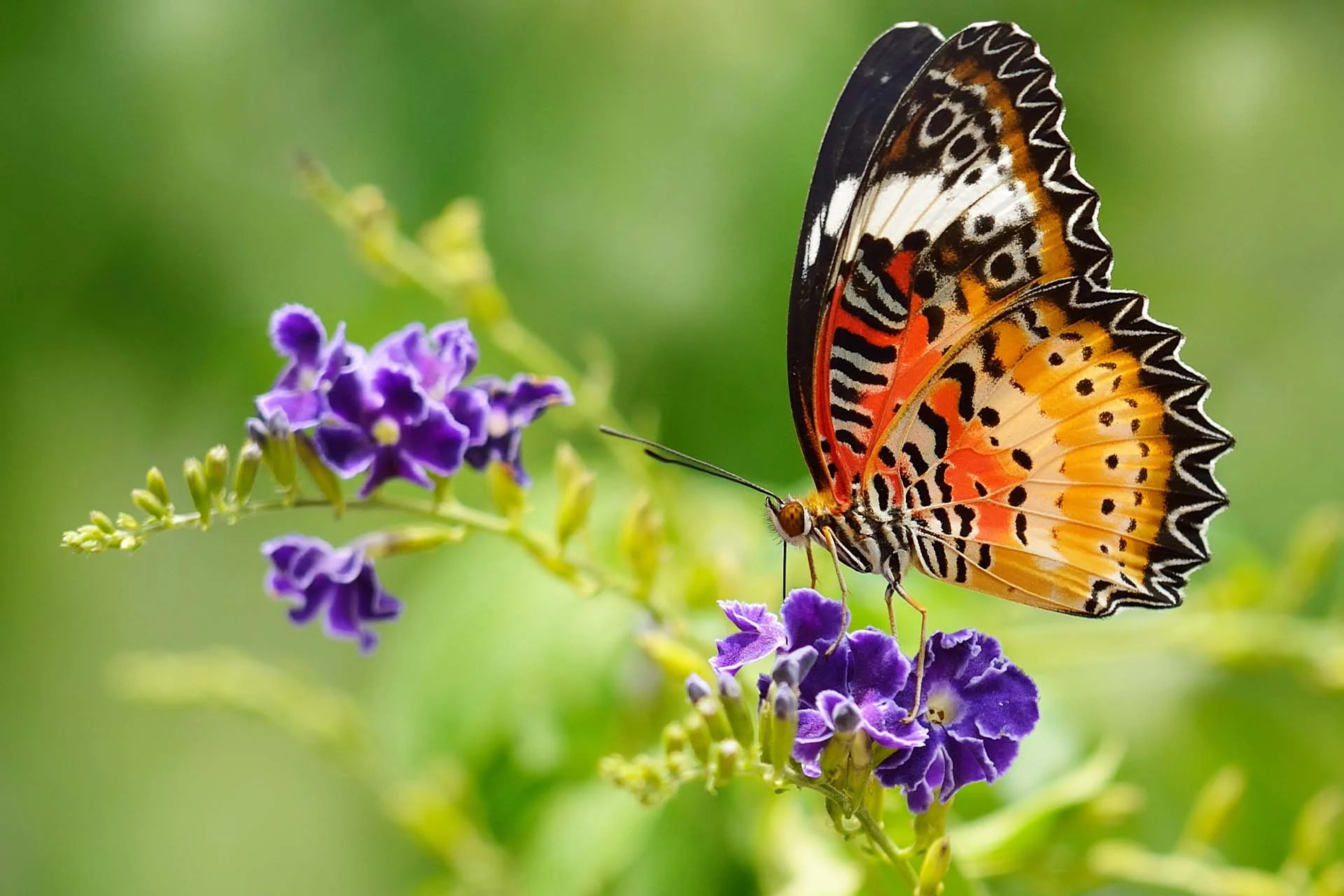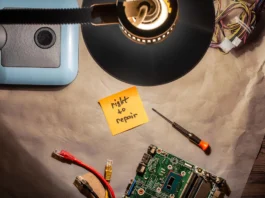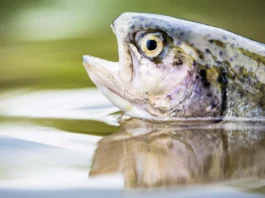What Happens When a Mountain of Trash Meets 50,000 Wildflowers?
On a breezy Saturday morning, a young girl kneels beside her dad on Staten Island’s North Park plateau, punching thumb-sized holes into a grid of weed-suppressing fabric. Moments later, she slips a violet seedling into the soil and looks up to watch a red-tailed hawk circle overhead. Twenty-three years ago, this same spot reeked of garbage and seagulls. Today it smells like fresh dirt and possibility.
Their family is among dozens of volunteers helping Freshkills Park Alliance launch the 50,000 Violet Project, an audacious plan to blanket 21 acres of the former Freshkills Landfill with native flowers over the next two years. Funded in part by the National Environmental Education Foundation’s 2024 Biodiversity Conservation Grant, the effort aims to lure monarchs, bees, and the regal fritillary—an orange-and-black butterfly whose caterpillars feed only on violets.
From Global Eyesore to Grassland Giant
Freshkills operated between 1948 and 2001, ballooning into the largest landfill on Earth by 1955 and peaking at 29,000 tons of trash every day in the late 1980s. Four capped mounds still hold roughly 150 million tons of refuse. Yet the 2,200-acre property—nearly three times the size of Central Park—is now on track to become New York City’s second-largest park by 2036.
North Park, the first permanent public section, opened in October 2023 with bird towers, solar-lit trails, and seven acres of native seed plots. Its rolling grasslands already sequester carbon: federal studies show that restored prairie and Conservation Reserve grasslands can lock away 0.22–0.45 tons of carbon per acre yearly. Multiply that by Freshkills’ acreage, and the park is quietly offsetting tens of thousands of tons of CO₂ while offering an outdoor classroom for ecological renewal.
Why Violets—and Why Now?
Pollinators are in trouble. Eastern monarch colonies overwintering in Mexico shrank 59% in the 2023-24 season, occupying just 2.2 acres of forest—an all-time low. Meanwhile, fritillary butterflies have vanished from large parts of their range as meadows give way to asphalt and herbicides. Violets are their lifeline; without the plant, fritillary caterpillars starve.

Field biologist Catherine Molanphy germinates the violet seedlings at the nearby Greenbelt Native Plant Center. “We had to start by taking out mugwort and Chinese bushclover,” she explains, pointing to neat rows of black landscape fabric that smother lingering invasives. Once the flowers are in the ground, her team will track bee counts, butterfly eggs, and soil microbes to measure the meadow’s performance.
Mark Murphy, president of the Freshkills Park Alliance, puts it bluntly: “Our grassland is more than a pretty view—it’s a working carbon sink and a living laboratory.”
Healing More Than Scenery
For many Staten Islanders, Freshkills also carries a public-health legacy. A 2024 study of 82,770 U.S. census tracts found that cancer risk rises 4 percent for every ten-point jump in proximity to hazardous waste sites. Staten Island records the city’s highest rates for multiple cancers, fueling lingering worry about decades of dump exposure.
Turning the site into biodiverse parkland doesn’t erase the past, but it does rewrite the future. Native vegetation stabilizes soil, reducing airborne particulates; expanded green space lowers extreme-heat impacts on surrounding neighborhoods; and community science programs invite residents to shape research agendas rather than be mere subjects of them.
How the Violet Project Works
- Soil Reset
• Invasives are mowed, tilled, and buried under breathable fabric.
• Crews cut planting holes on a one-foot grid. - Seedling Production
• Violet seeds are cold-stratified over winter to mimic natural cycles.
• Greenhouse trays are transplanted into the field each spring. - Pollinator Reintroduction
• Once blooms appear, scientists release bee boxes and monitor butterfly egg counts.
• Success is measured by pollinator visits, seed set, and soil-life diversity. - Long-Term Monitoring
• Student interns log plant growth, temperature, and soil moisture.
• Data feeds regional models tracking how grassland restoration can buffer shifting weather patterns.
A Template Cities Can Copy
Freshkills’ carbon-capturing meadow sits atop engineered landfill layers thick enough to hold 757 football fields of waste. If native violets thrive here, they can thrive on capped dumps elsewhere, scaling low-cost pollinator corridors in places long written off as wastelands.

Cities from Houston to Delhi face aging landfills and bee declines. The Freshkills blueprint—pairing invasive removal, native seed plots, and citizen-science monitoring—offers a replicable recipe that doesn’t rely on expensive technology.
Five Ways You Can Move the Needle
- Volunteer for a Planting Shift
Freshkills Park Alliance posts weekend workdays from April through October. Glove up, dig holes, and give seedlings a head start. - Adopt a Flat of Violets
A $20 donation covers twenty plants! - Swap Chemicals for Compost at Home
Replace synthetic lawn treatments with compost and native groundcovers to extend pollinator habitat beyond park fences. - Record Butterfly Sightings
Use apps like iNaturalist to log monarchs and fritillaries. Data helps biologists map migration bottlenecks. - Push for Native Plant Policies
Email local parks departments to prioritize region-specific flowers in landscaping contracts, turning public medians into micro-meadows.
What Success Could Look Like
Ecologists believe a dense violet carpet can host enough caterpillars to support a self-sustaining regal fritillary colony within five years. If that happens, Staten Island would claim New York’s first breeding population in decades, giving schoolkids the chance to watch a species rebound in real time.
Trash mountains don’t have to be permanent scars. With community grit, science-backed planting, and a few trays of humble violets, even the world’s biggest dump can flip from source of risk to source of life.
So here’s the question: what forgotten lot in your neighborhood is waiting for its first seedling?





More of this, please.
They just covering up the problem
I always thought Fresh Kills was just a sad footnote in NYC history.
Good for the 🦋
How you gunna turn a garbage pile into a butterfly sanctuary and call it progress
What’s the long-term health impact???
💕💕💕
Awesome 🥰
Will they survive NYC rats?
Staten Island needs some beauty
How do they measure pollinator success?
By looking at things like how many fruits and seeds a plant produces, how much pollen gets transferred, and how often pollinators show up. Scientists track this in different ways. Watching the plants directly, checking pollen under a microscope, and comparing what happens when plants get pollinated versus when they don’t.